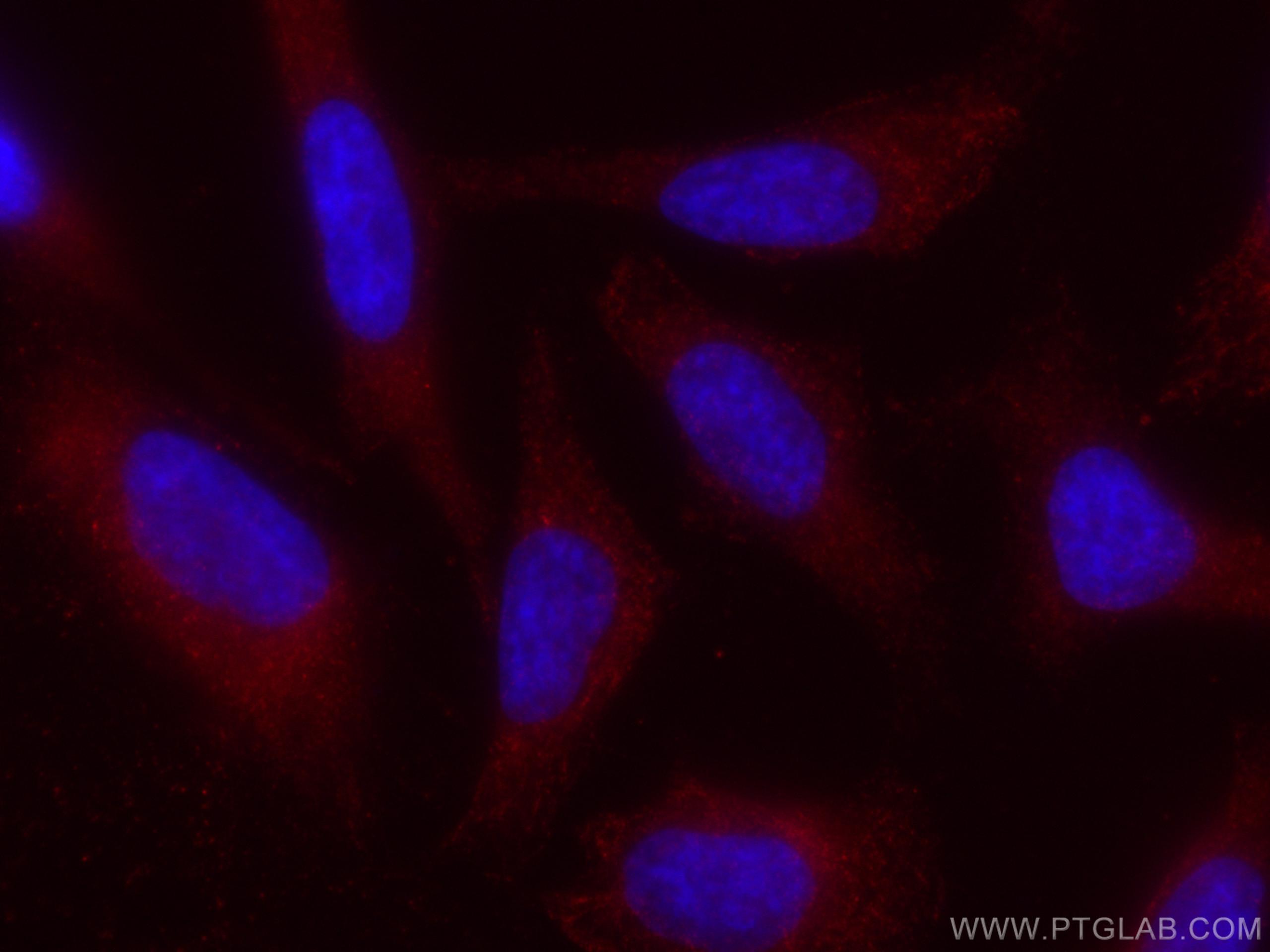NCALD Monoklonaler Antikörper
NCALD Monoklonal Antikörper für IF/ICC
Wirt / Isotyp
Maus / IgG2a
Getestete Reaktivität
Hausschwein, human, Maus
Anwendung
IF/ICC
Konjugation
CoraLite®594 Fluorescent Dye
CloneNo.
6B4E10
Kat-Nr. : CL594-66088
Synonyme
Geprüfte Anwendungen
| Erfolgreiche Detektion in IF/ICC | HeLa-Zellen |
Empfohlene Verdünnung
| Anwendung | Verdünnung |
|---|---|
| Immunfluoreszenz (IF)/ICC | IF/ICC : 1:50-1:500 |
| It is recommended that this reagent should be titrated in each testing system to obtain optimal results. | |
| Sample-dependent, check data in validation data gallery | |
Produktinformation
CL594-66088 bindet in IF/ICC NCALD und zeigt Reaktivität mit Hausschwein, human, Maus
| Getestete Reaktivität | Hausschwein, human, Maus |
| Wirt / Isotyp | Maus / IgG2a |
| Klonalität | Monoklonal |
| Typ | Antikörper |
| Immunogen | NCALD fusion protein Ag18760 |
| Vollständiger Name | neurocalcin delta |
| Berechnetes Molekulargewicht | 193 aa, 22 kDa |
| GenBank-Zugangsnummer | BC036098 |
| Gene symbol | NCALD |
| Gene ID (NCBI) | 83988 |
| Konjugation | CoraLite®594 Fluorescent Dye |
| Excitation/Emission maxima wavelengths | 588 nm / 604 nm |
| Form | Liquid |
| Reinigungsmethode | Protein-A-Reinigung |
| Lagerungspuffer | PBS with 50% glycerol, 0.05% Proclin300, 0.5% BSA |
| Lagerungsbedingungen | Bei -20°C lagern. Vor Licht schützen. Nach dem Versand ein Jahr stabil. Aliquotieren ist bei -20oC Lagerung nicht notwendig. 20ul Größen enthalten 0,1% BSA. |
Hintergrundinformationen
NCALD(Neurocalcin-delta) is a member of the EF-hand calcium-binding protein superfamily.It may be involved in the calcium-dependent regulation of rhodopsin phosphorylation.It is a high-affinity Ca2+ sensor (Kd of approx. 0.6 uM), which is most abundantly expressed in the Purkinje cells of the cerebellum(PMID:11964161).This antibody is specific to NCALD.
Protokolle
| PRODUKTSPEZIFISCHE PROTOKOLLE | |
|---|---|
| IF protocol for CL594 NCALD antibody CL594-66088 | Protokoll herunterladen |
| STANDARD-PROTOKOLLE | |
|---|---|
| Klicken Sie hier, um unsere Standardprotokolle anzuzeigen |


